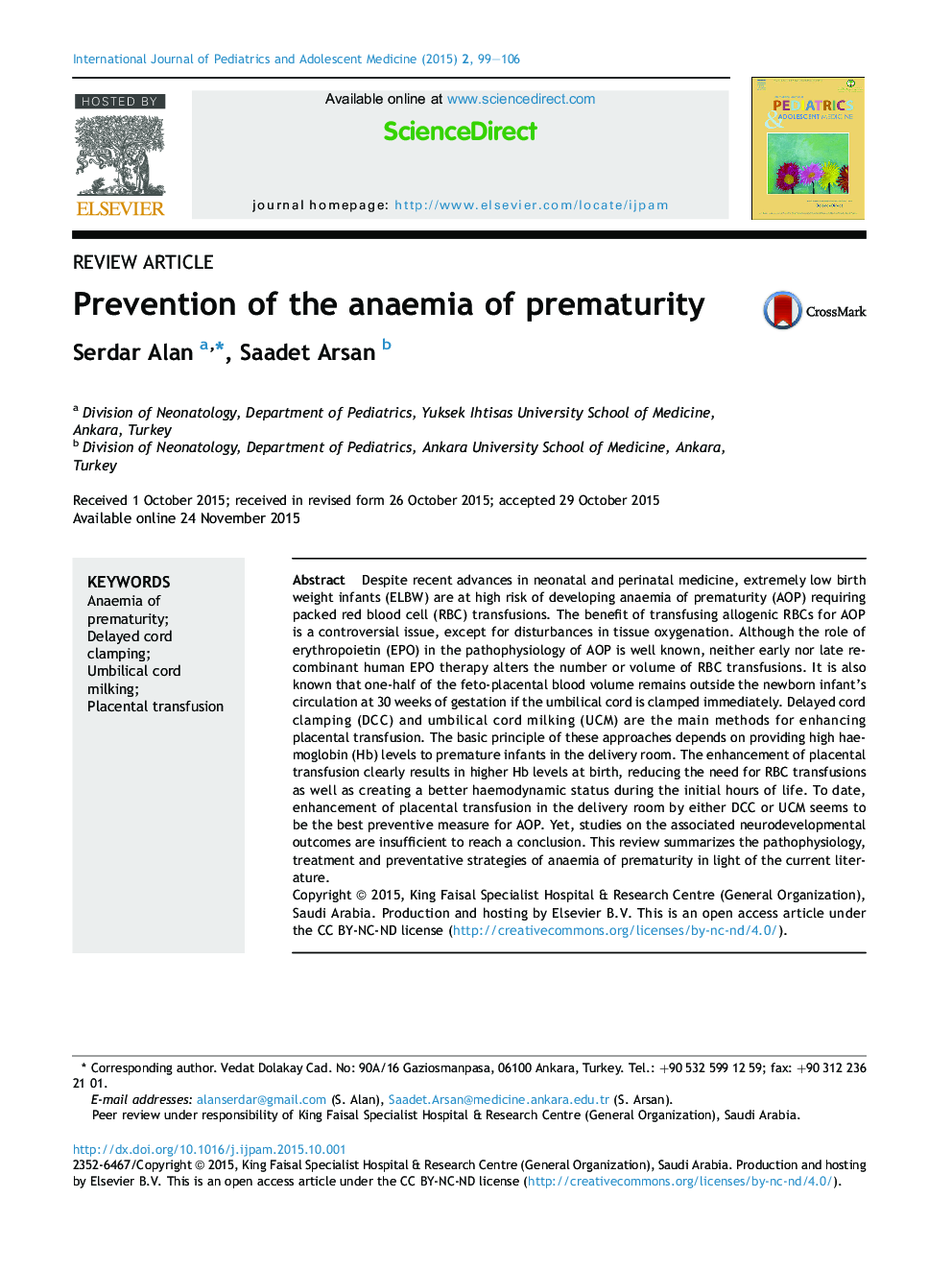| کد مقاله | کد نشریه | سال انتشار | مقاله انگلیسی | نسخه تمام متن |
|---|---|---|---|---|
| 4153716 | 1607047 | 2015 | 8 صفحه PDF | دانلود رایگان |
Despite recent advances in neonatal and perinatal medicine, extremely low birth weight infants (ELBW) are at high risk of developing anaemia of prematurity (AOP) requiring packed red blood cell (RBC) transfusions. The benefit of transfusing allogenic RBCs for AOP is a controversial issue, except for disturbances in tissue oxygenation. Although the role of erythropoietin (EPO) in the pathophysiology of AOP is well known, neither early nor late recombinant human EPO therapy alters the number or volume of RBC transfusions. It is also known that one-half of the feto-placental blood volume remains outside the newborn infant's circulation at 30 weeks of gestation if the umbilical cord is clamped immediately. Delayed cord clamping (DCC) and umbilical cord milking (UCM) are the main methods for enhancing placental transfusion. The basic principle of these approaches depends on providing high haemoglobin (Hb) levels to premature infants in the delivery room. The enhancement of placental transfusion clearly results in higher Hb levels at birth, reducing the need for RBC transfusions as well as creating a better haemodynamic status during the initial hours of life. To date, enhancement of placental transfusion in the delivery room by either DCC or UCM seems to be the best preventive measure for AOP. Yet, studies on the associated neurodevelopmental outcomes are insufficient to reach a conclusion. This review summarizes the pathophysiology, treatment and preventative strategies of anaemia of prematurity in light of the current literature.
Journal: International Journal of Pediatrics and Adolescent Medicine - Volume 2, Issues 3–4, September–December 2015, Pages 99–106
